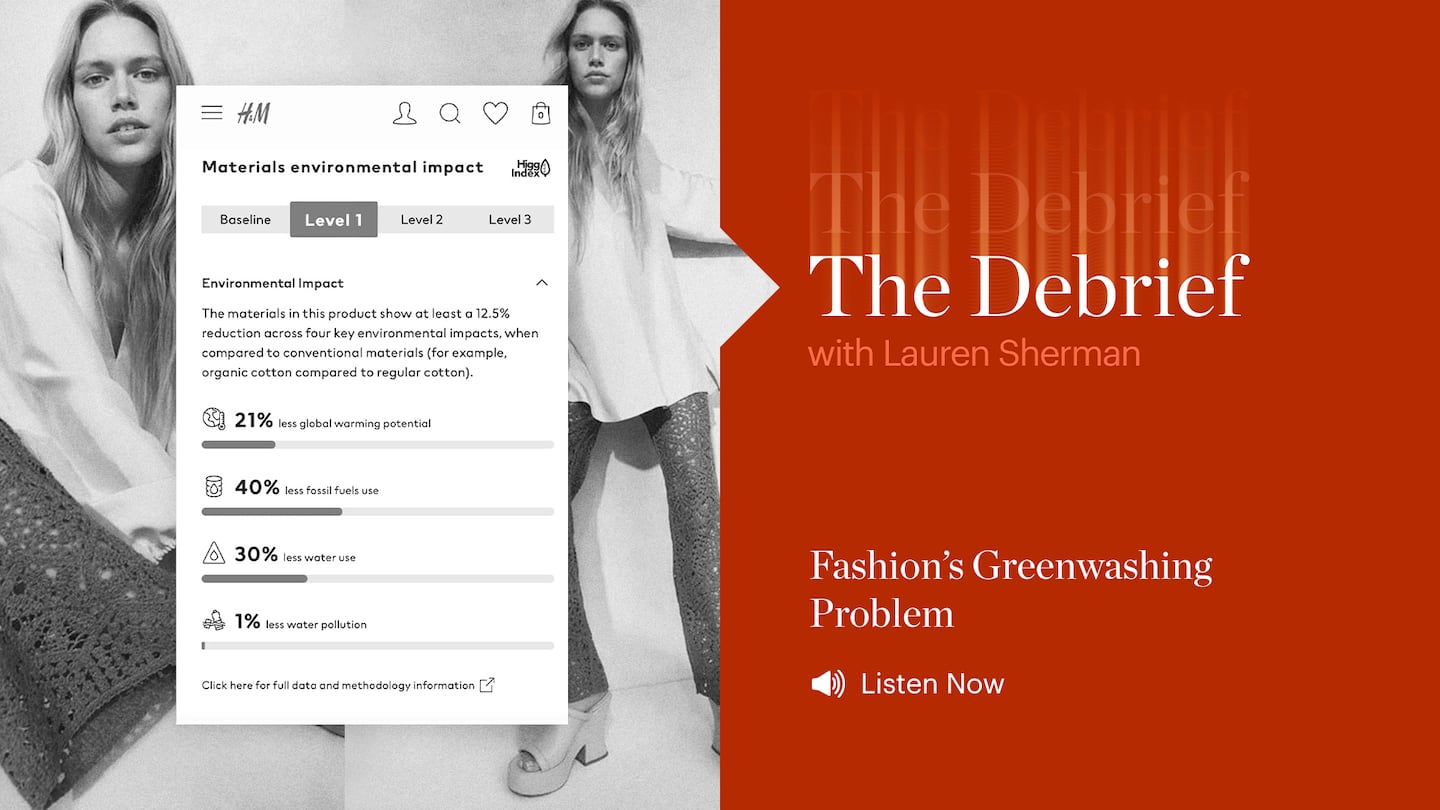
The Business of Fashion
Agenda-setting intelligence, analysis and advice for the global fashion community.

Agenda-setting intelligence, analysis and advice for the global fashion community.

To subscribe to The Debrief, please follow this link.
Background:
Concern about the environmental impact of clothing has swelled in the past few years. So too has the practice of greenwashing. Right now, fashion marketing is flooded with eco-conscious messaging as brands dub their products “sustainable” without doing the groundwork to back up declarations. Consumers and regulatory parties are starting to demand more.
“What we’re seeing is companies wanting to talk more about this, consumers wanting to know more about this, and regulators really sitting up,” said chief sustainability correspondent Sarah Kent. “It’s this perfect storm where something that has been an issue that needed to be addressed for a long time is coming to a head.”
ADVERTISEMENT
Key Insights:
Additional Resources:
Join BoF Professional for the analysis and advice you need. Get 30 days for just $1 or explore group subscriptions for your business.
The fashion industry continues to advance voluntary and unlikely solutions to its plastic problem. Only higher prices will flip the script, writes Kenneth P. Pucker.
The outerwear company is set to start selling wetsuits made in part by harvesting materials from old ones.
Companies like Hermès, Kering and LVMH say they have spent millions to ensure they are sourcing crocodile and snakeskin leathers responsibly. But critics say incidents like the recent smuggling conviction of designer Nancy Gonzalez show loopholes persist despite tightening controls.
Europe’s Parliament has signed off rules that will make brands more accountable for what happens in their supply chains, ban products made with forced labour and set new environmental standards for the design and disposal of products.